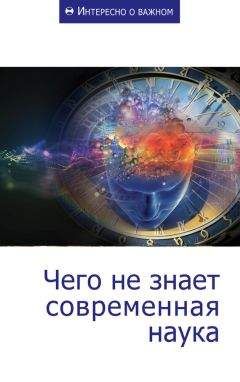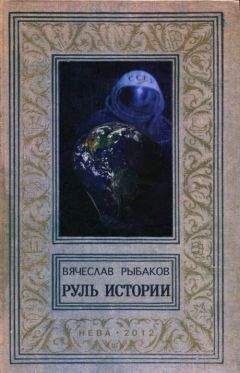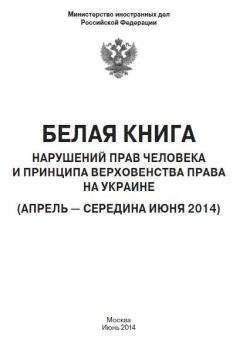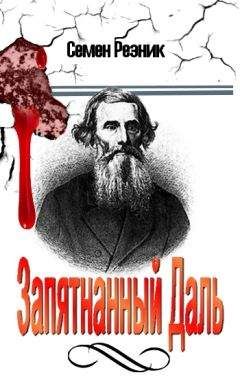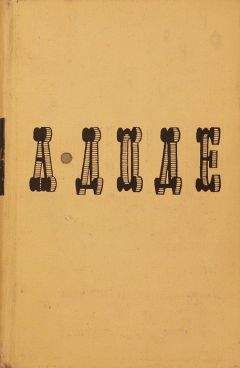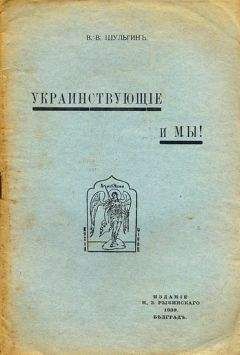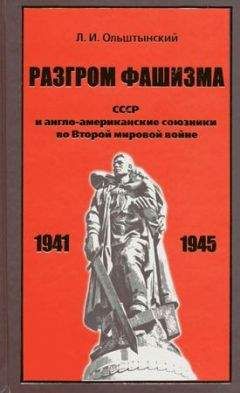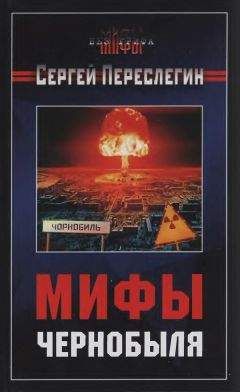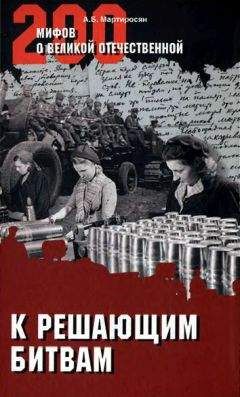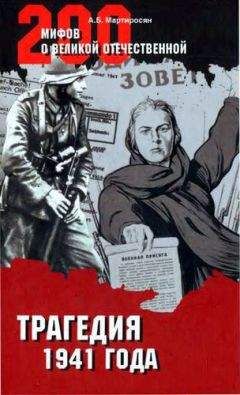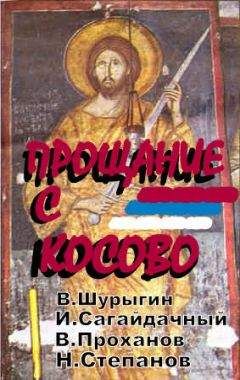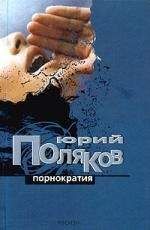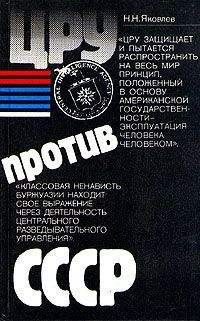Пер Рудлинг - ОУН и УПА: исследования о создании "исторических " мифов. Сборник статей

Скачивание начинается... Если скачивание не началось автоматически, пожалуйста нажмите на эту ссылку.
Жалоба
Напишите нам, и мы в срочном порядке примем меры.
Описание книги "ОУН и УПА: исследования о создании "исторических " мифов. Сборник статей"
Описание и краткое содержание "ОУН и УПА: исследования о создании "исторических " мифов. Сборник статей" читать бесплатно онлайн.
Сборник статей «ОУН и УПА: исследования о создании «исторических» мифов» является вторым изданием в серии «Историческая правда», основанной Международным антифашистским фронтом в 2011 году.
В издании представлены исследования современных западных ученых — Пера Андерса Рудлинга, Тимоти Д. Шнайдера, Гжегожа Россолинского-Либе на тему украинского радикального национализма, фашизма, создания антиисторических мифов вокруг ОУН-УПА, преступлений против человечности, попыток героизации и реабилитации этих организаций и их членов.
Большинство исследований в Украине публикуются впервые.
84
Viktor Khar’kiv “Khmara,” a member of both Nachtigall and then Schutzmannschaft battalion 201, wrote in his diary that he participated in the shooting of Jews in two villages in the vicinity of Vinnytsia. TsDAVO Ukrainy, f. 3833, op. 1, spr. 57, ark. 17–18.
85
Bruder, “Den ukrainischen Staat,” 147.
86
Alexander Dallin, German Rule in Russia, 1941–1945: A Study of Occupation Policies, 2d ed. (Boulder, Colo.: 1981), passim.
87
The leader of the original UPA, Taras Bul’ba-Borovets, wrote that “the supporter of pathological Führerprinzip (vozhdyzm), the banderite Kuzii, killed the two senior offi cers of the Ukrainian army, Colonel Mykola Stsibors’kyi and Captain Senyk-Hrybivs’kyi, who were leaders of the Provid of the OUN[(m)] and were travelling to Kyiv, by shooting them in the back on an open street.” Taras Bul’ba-Borovets’, Armiia bez derzhavy: Slava i trahediia ukrains’koho povstans’koho rukhu. Spohady. (Kyiv: Knyha Rodu, 2008), 154. The OUN(m) immediately accused the OUN(b) of the murders, which carried all the hallmarks of Banderite assasinations. TsDAVO Ukrainy, f. 3833, op. 1, spr. 42, l. 33, “Podae do vidoma!” claims the two OUN(m) leaders “fell by the hand of fratricidal murder”; TsDAVO Ukrainy, f. 3833, op. 1, spr. 42, l. 42, “Dvi klespsydry,” accused the OUN(b) of the murder, claiming that Stsibors’kyi and Senyk were killed by “fratricidal bullets.” German documents show that there was no German involvement in these murders.
88
Grzegorz Rossolinski-Liebe, “Celebrating Fascism and War Criminality in Edmonton: The Political Myth and Cult of Stepan Bandera in Multicultural Canada,” Kakanien Revisited, December 29, 2010, 3: http://www.kakanien.ac.at/beitr/fallstudie/GRossolinski-Liebe2.pdf (accessed January 9, 2011), citing Federal’naia Sluzhba Bezopasnosti, Moscow, N-19092/T. 100 l. 233 (Stepan Bandera’s prison card).
89
Marples, Heroes and Villains, 129.
90
“Olevsk,” entry by Jared McBride and Alexander Kruglov, Encyclopedia of Camps and Ghettoes, 1933–1945, vol. 2, German-Run Ghettos, ed. Martin Dean (Bloomington: Indidana University Press in association with the United States Holocaust Memorial Museum, forthcoming); Jared McBride, “Ukrainian Neighbors: The Holocaust in Olevs’k,” unpublished working paper.
91
Bul’ba-Borovets’, Armiia bez derzhavy, 247.
92
Breitman and Goda, Hitler’s Shadow, 74; Marples, Heroes and Villains, 129–130, 309; Bul’ba- Borovets’, Armiia bez derzhavy, 250–267; Report from Soviet agent “Iaroslav” to the deputy director of the third department of the GUKR NKO “Smersh,” Nov. 23, 1944, HDA SBU, f. 13, sbornik no. 372, tom 5, l. 25, reports that “the local leadership of OUN North has partly begun a struggle to totally liquidate the “Bul’ba” party and to cleanse a large part of Volhynia from Red Partisans”; “Orientovka o deiatel’nosti ukrainsko-nemetskikh nationalistiov v zapadnnykh oblastiakh Ukrainskoi SSR za period 1941–1944 g.g.: Sostavlena po materialam NKVD USSR,” report from the Ukrainian SSR commissar Riasnoi of State Security, Kyiv, March 1944, HDA SBU f. 13, sbornik 372, tom 5, 199. This author uses the commonly used term OUN-UPA to describe the organization following its violent takeover by the banderivtsy, and to distinguish the post-1942 UPA from the organization led by Bul’ba-Borovets’, which had a quite different orientation and ideology. The OUN(b) perceived the UPA as its armed wing; its leadership was staffed with ranking OUN(b) cadres. From May 1943 Shukhevych was the leader of both the OUN(b) and the UPA, and even the UPA’s own fl iers used the term “OUN-UPA.” While the OUN(b)-led UPA from July 1944 was formally subordinated to the socalled Ukrainian Main Liberation Council, UVHR, this organization was staffed by the leaders of the OUN(b): Shukhevych was responsible for military matters, Lebed’ for foreign affairs in the General Secretariat. Bruder, “Den Ukrainischen Staat,” 189, 194, 202. Bul’ba-Borovets’ dismissed the idea that the UVHR would be anything but the OUN(b) leadership under a different name as a “falsifi cation”: “UVHR was the same and only OUN Lebed’-Bandera. Its ‘Council’[Rada] was declared to be a new form of that same group of people, Lebed’, Stets’ko, Father Hryn’okh, Roman Shukhevych, Stakhiv, Lenkavs’kyi, Vretsiun, Okhrymovych, Rebet, and others.” Bul’ba-Borovets’, Armiia bez derzhavy, 291. Shukhevych himself emphasized the institutional continuity of the OUN(b) and UPA: “The new revolutionary organizations UVO and OUN were born out of the traditions of insurgent struggle, which they maintained through the entire, diffi cult 25-year period of occupation in order to in 1943 again put into action a massive insurgency — now under the name of UPA.” T. Chuprynka [Roman Shukhevych], “Zvernennia Holovnoho komamdyra UPA R. Shukhevycha do voiakiv UPA, July 1946,” cited in Volodymyr Serhiichuk et al. eds., Roman Shukhevych u dokumentakh raiianskykh orhaniv derzhavnoi bezpeky, 1940–1950, (Kyiv: PP Serhiichuk M. I., 2007), 2: 52.
93
See, for instance Martin Dean, Collaboration in the Holocaust: Crimes of the Local Police in Belorussia and Ukraine, 1941–1944 (New York: St. Martin’s Press in association with the United States Holocaust Museum, 2000). See also Timothy Snyder, “To Resolve the Ukrainian Problem Once and For All: The Ethnic Cleansing of Ukrainians in Poland, 1943–1947,” Journal of Cold War Studies, no. 2 (1999): 97.
94
“[An] analysis of 118 biographies of OUN(b) and UPA leaders in Ukraine during World War II shows that at least 46 % of them served in the regional and local police and administration, the Nachtigall and Roland Battalions, the SS Galicia Division, or studied in German-sponsored military schools, primarily, in the beginning of World War II. At least 23 % of the OUN(B) and UPA leaders in Ukraine were in the auxiliary police, Schutzmannschaft Battalion 201, and other police formations, 18 % in military and intelligence schools in Germany and Nazi-occupied Poland, 11 % in the Nachtigall and Roland Battalions, 8 % in the regional and local administration in Ukraine during the Nazi occupation, and 1 % in the SS Galicia Division.” Katchanovski, “Terrorists or National Heroes,” calculated from Petro Sodol, Ukrains’ka povstancha armiia, 1943–1949: Dovidnyk, (New York: Proloh, 1994).
95
Report No. 4-8-2034, by Pavel Sudoplatov, the leader of the third department of the fourth UPR of the NKGB of the USSR, to Kobulov, Deputy People’s Commissar of the NKGB of the USSR, March 16, 1944 HDA SBU, f. 13, sbornik no. 372, tom. 5, l. 209.
96
Reichsführer-SS, Chef der Deutschen Polizei, Chef der Bandenkampfverbände Ic.-We./Mu. Tgb. Nr. 67/44 a. H. Qu. 4 Januar 1944 lc.-Bericht über die Bandenlage ost für die Zeit von 16.12–31.12 1943, Natsional’nyi Arkhiv Respubliki Belarus’ (NARB), f. 685, vop. 1, sp. 1, t. 1, l. 8.
97
Timothy Snyder, The Reconstruction of Nations: Poland, Ukraine, Lithuania, Belarus, 1569–1999 (New Haven, Conn.: Yale University Press, 2003), 162.
98
Friedman, “Ukrainian-Jewish Relations,” 182.
99
Berkhoff, Harvest of Despair, 291.
100
Snyder, Reconstruction of Nations, 165.
101
Mykhail Dmytrievich Stepeniak fi le, HDA SBU, f. 6, d. 1510, tom. 1, ll. 29, 39.
102
Bruder, “Den ukrainischen Staat,” 166, citing Ereignismeldung UdSSR Nr. 126 of October 27, 1941, Meldung der Kommandeurs der Sipo und des SD in Lemberg, BArch Berlin-Lichterfelde, R 58/218, Bl. 323.
103
A UPA “pogrom” could look like this: “Before our military action we were given orders to kill and rob all Poles and Jews on the territory of the Dederkal’s’kyi r[aio]n. I personally took part in the pogrom of Poles and Jews in the Dederlal’kyi raion in the village Kotliarovka May 10–15, 1943. There we burnt 10 Polish farmsteads, killed about 10 people, and the rest escaped.” “Protokol doprosa Vozniuka Fedora Iradionovicha, 23 maia 1944,” HDA SBU, f. 13, spr. 1020, ark. 221–229. Thanks to Jared McBride for this reference.
104
Bruder, “Den ukrainischen Staat,” 100, citing Kommunikat Nr. 7, Archiwum Akt Nowych, Ambasada RP w Berlinie 3677, Bl. 262.
105
W" adis" aw Siemaszko and Ewa Siemaszko, eds. Ludobójstwo dokonane przez nacjonalistów ukranskich na ludno$ci polskiej Wo!ynia 1939–1945, 2 vols., (Warsaw: Wydawn. von Borowiecky 2000),1:872; see also 2:1269. Other UPA songs had a similar content:
Zdobywaj, zdobywajmy slawe!..………….Let us achive our glory!
Wykosimy wszystkich Lachów po Warszaw. We’ll cut down all Poles [Liakhy] all the way to Warsaw.
Ukrai" ski narodzie. Ukrainian nation.
Zdobywaj, zdobywajmy sile! …………………………..Gather strength!
Zar(niemy wszystkich Lachów do mogi!y. We’ll butcher the Poles into their graves.
Ukranski narodzie. .Ukrainian nation.
Gdzie San, gdzie Karpaty…….. From the river San, to the Carpatians,
gdzie Krym, gdzie Kauka …………… From the Crimea to the Caucasus
Ukraina — Ukraincom…………………. Ukraine for the Ukrainians, a
wszystkim przybledom — precz! …….All aliens must go!
After (the Polish translation) in ibid., 2: 1294. Grzegorz Motyka, cites the following OUN march: “Death, death, death to the Poles/Death to the Moscow-Jewish commune/The OUN leads us into bloody battle. Each tormentor will face the same fate/ One gallow for Poles [Liakh] and dogs.” Grzegorz Motyka, Ukrai" ska partyzantka 1942–1960: dzialalnosc Organizacji Ukranskich Nacjonalistów i Ukranskiej Powsta" czej Armii (Warsaw: Instytut Studiów Politycznych PAN; RYTM, 2006), 54.
106
Bruder, “Den ukrainischen Staat,” 146.
107
Berkhoff, Harvest of Despair, 292.
108
Snyder, Reconstruction of Nations, 169.
109
Moshe Maltz, Years of Horrors — Glimpse of Hope: The Diary of a Family in Hiding (New York: Shengold, 1993), 147, entry for November 1944.
110
Ibid., diary entry for November 1943, 107.
111
Carynnyk, “Foes of our Rebirth”; Per A. Rudling, “Theory and Practice: Historical Representation of the Activities of the OUN-UPA,” East European Jewish Affairs, 36, no. 2 (2006): 163–189.
112
John-Paul Himka, “The Ukrainian Insurgent Army and the Holocaust,” paper prepared for the forty-first national convention of the American Association for the Advancement of Slavic Studies, Boston, November 12–15, 2009, 8.
113
“With the Poles gone and the Soviets approaching, UPA made a decsion to fi nd the remaining Jewish survivors and liquidate them. As the Germans had taught them, they made assurances to Jews that they would not harm them anymore, they put them to useful work in camp-like settings, and then they exterminated them. These murders took place at the same time OUN was trying to make overtures to the Western Allies (as were the East European collaborationist regimes.). What is absolutely clear, however, is that a major attempt was launched at this time to eliminate Jewish survivors completely.” Ibid., 27.
114
Weiner, Making Sense of War, 264, citing interrogation of Vladimir Solov’ev, TsDAHO Ukrainy, f. 57, op. 4, d. 351, l. 52. On UPA murder of Jews, see Shmuel Spector, The Holocaust of Volhynian Jews, 1941–1944 (Jerusalem: Yad Vashem and the Federation of Volhynian Jews, 1990), 268–273.
115
Threatened Poles sought help from the Germans, and in some cases, replaced local Ukrainians as police units. The UPA’s own records from spring 1944 show how the murder of Poles continued, now on the charges that the Poles collaborated with the Gestapo. One UPA document, for the period March 13–April 15, 1944, reports 298 Poles in 19 villages were killed, many farmsteads burnt down, but a fraction of the OUN-UPA murders at the time. “Zvit s protypol’stkykh aktiv,” Postii, I. V. 44, TsDAVO, f. 4620, op. 3, spr. 378, ll. 43–44. On the OUN(b)-led UPA murder of Jews in Galicia during this period, see Himka, “The Ukrainian Insurgent Army and the Holocaust,” 12–17.
116
Motyka, Ukrai" ska partyzantka, 295–297.
117
Himka,“The Ukrainian Insurgent Army and the Holocaust,” 28.
118
According to the most extensive study of the OUN-UPA’s anti-Polish campaign, the number of Polish victims reach 130,800 when including the victims whose names could not be established. Ewa Siemaszko, “Bilans Zbrodni,” Biuletyn instytutu pamieci narodowej, no. 7–8 (116–117) (July — August 2010): 93.
119
Motyka, Ukranska partyzantka, 346–347. Mixed families were quite common in the Polish-Ukrainian borderlands, where the custom was that boys inherited nationality after their father, girls after their mothers. Kresy literature contains many testimonies of murders within mixed families. Ewa and Wlodys" aw Siemaszko have registred forty-five victims of intrafamily killings in Volhynia alone. Most of the victims are known by surname. Siemaszko and Siemaszko, Ludobójstwo, 2: 1059, table 13.
120
Andrii Bolianovs’kyi, “Ivan Hryn’okh — Providnyyi diach ukrains’koho pidpillia,” in Ivan Hryn’okh, Boh i Ukraina ponad use, ed. and introduction by Oleksandr Panchenko (Hadiach: Vydavnytstvo “Hadiach,” 2007), 64–65. 120. TsDAVO Ukrainy, f. 4628, op. 1, d. 10, ll. 170–179, in Vorontsov, “OUN-UPA,” 229.
Подписывайтесь на наши страницы в социальных сетях.
Будьте в курсе последних книжных новинок, комментируйте, обсуждайте. Мы ждём Вас!
Похожие книги на "ОУН и УПА: исследования о создании "исторических " мифов. Сборник статей"
Книги похожие на "ОУН и УПА: исследования о создании "исторических " мифов. Сборник статей" читать онлайн или скачать бесплатно полные версии.
Мы рекомендуем Вам зарегистрироваться либо войти на сайт под своим именем.
Отзывы о "Пер Рудлинг - ОУН и УПА: исследования о создании "исторических " мифов. Сборник статей"
Отзывы читателей о книге "ОУН и УПА: исследования о создании "исторических " мифов. Сборник статей", комментарии и мнения людей о произведении.





